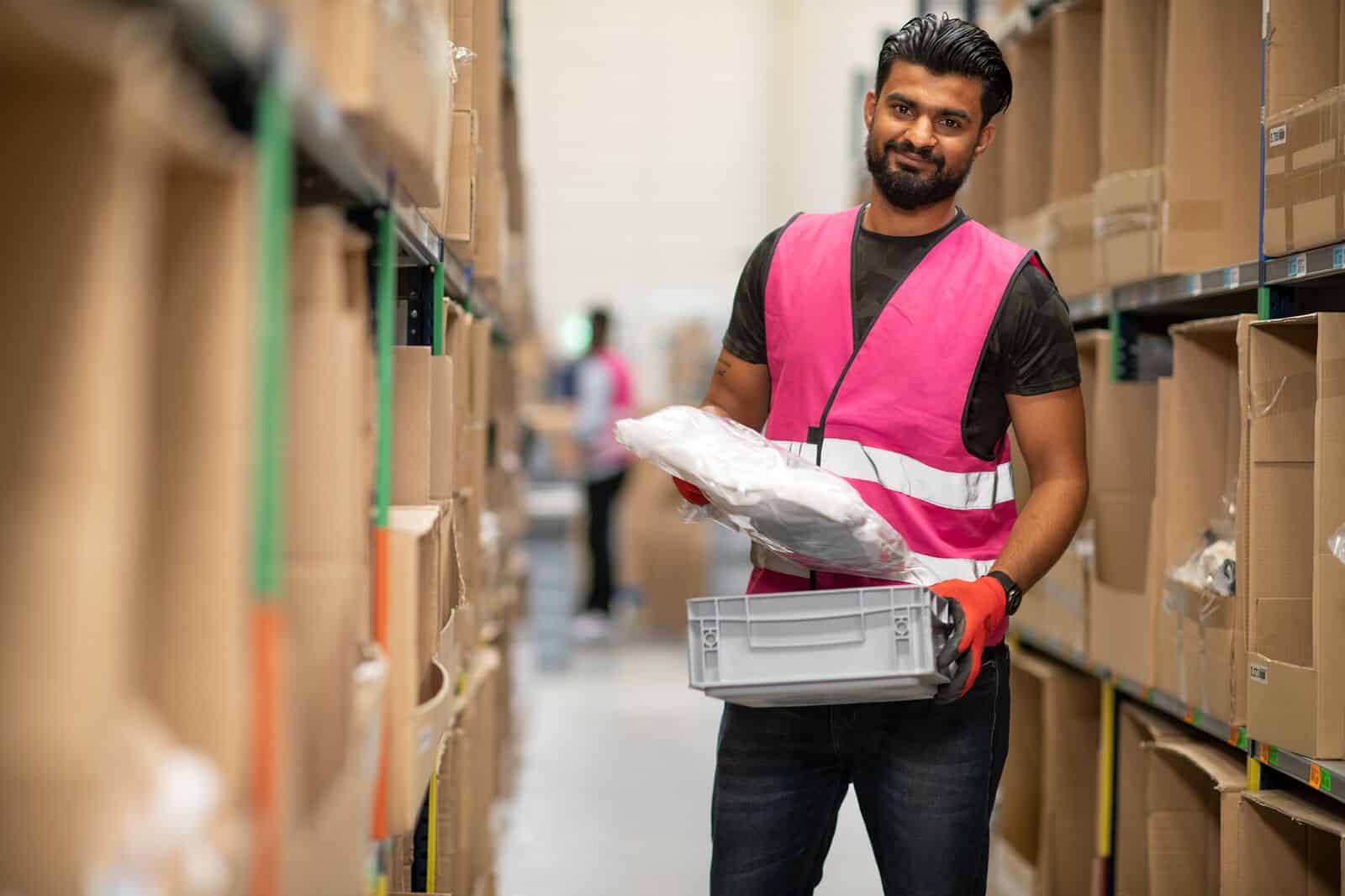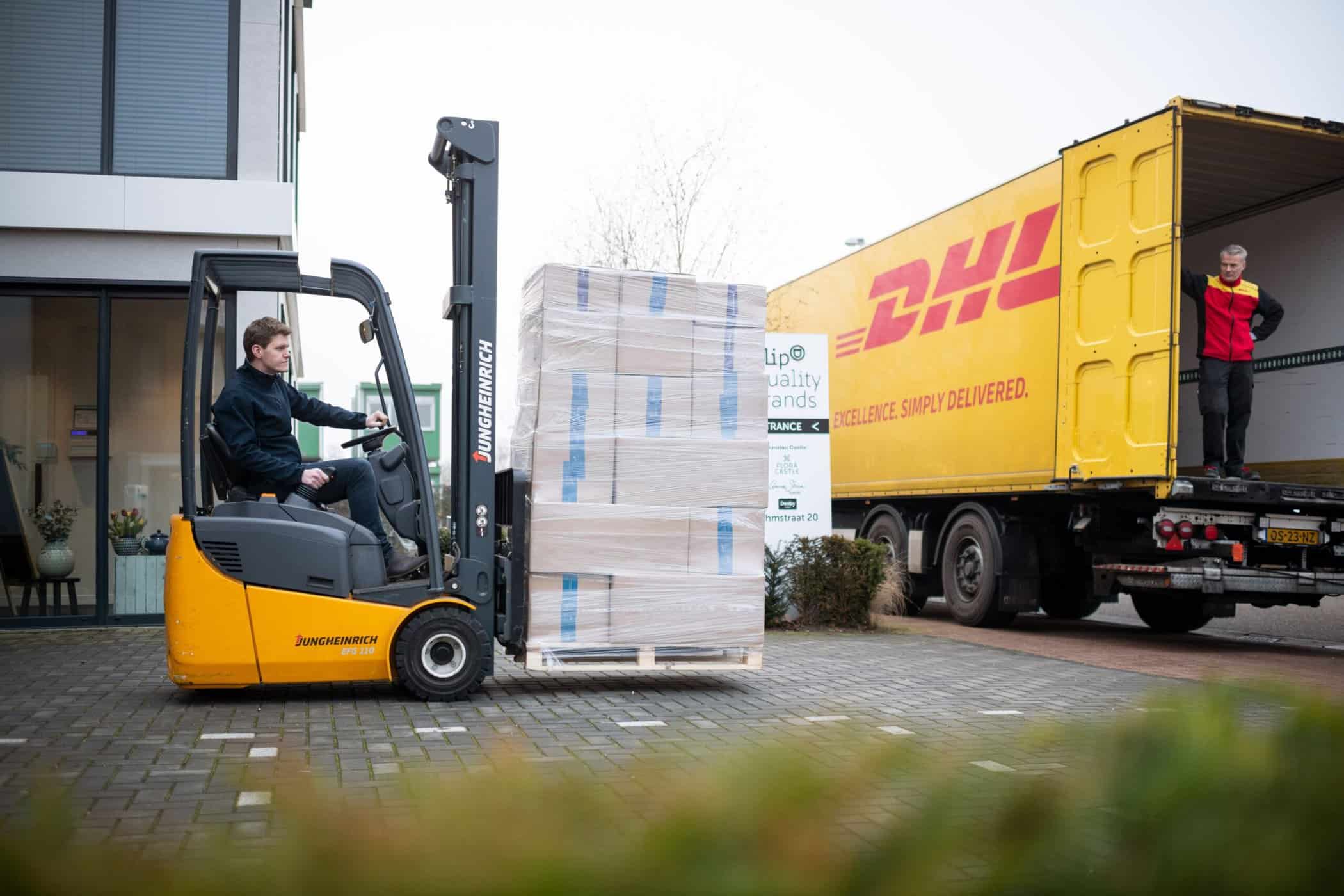Are you struggling to keep up with the demands of your growing e-commerce business? Ineffective e-commerce fulfillment could be the issue. Mistakes, damages, and unfulfilled orders all lead to frustrated customers and a damaged reputation.
In this article, we’ll explore seven common e-commerce fulfillment challenges that can wreak havoc on your business and provide actionable solutions to help you optimize your fulfillment strategy.
We know that time is money, so whether you’re a new business or an established one, this article is essential if you want to turn your e-commerce fulfillment strategy into a competitive advantage.
So, keep reading to discover how to keep your orders flowing smoothly and your customers happy! We dive into:
- What is e-commerce fulfillment and why is it important?
- 7 common e-commerce fulfillment challenges businesses face
What is e-commerce fulfillment and why should you care about it?
If you have an online business, you’re probably aware that e-commerce fulfillment is the act of getting your orders to your customers.
But e-commerce fulfillment is more than just the delivery of your products; it encompasses all 5 steps involved, including receiving inventory, processing orders, packing and shipping orders to customers, and handling returns.
In today’s fast-paced world, customers expect speedy delivery and a seamless experience. Getting e-commerce fulfillment right is crucial, and it can be the difference between a satisfied returning customer and a disgruntled one who shares their bad experience online (a sure-fire reputation killer).
But it’s not just all about customer satisfaction.
Getting e-commerce fulfillment wrong will also heavily cut into your profits, or worse, eliminate them altogether. It will hinder your growth potential by requiring too many resources and too much time. Bottlenecks will prevent you from investing in other areas of your business, ultimately stagnating your growth – and that’s definitely not what we want to happen.
And that’s why a solid e-fulfillment strategy is essential.
So without further ado, let’s dive into the common 7 challenges online retailers face with their e-commerce fulfillment strategy, and find out how exactly they hinder growth.
1: E-commerce fulfillment costs too much money
If you think your e-commerce fulfillment is costing too much money, you’re not the only one.
Many online sellers struggle with reducing their shipping and logistics expenses, which can impact profitability, customer satisfaction, and the ability to scale.
Here are some of the common ways that e-commerce stores waste money on their fulfillment:
- Overlooking shipping costs: Failing to factor in shipping costs can lead to incorrect product pricing and lower profit margins. Integrating shipping costs into product pricing can prevent this issue.
- Poor inventory management: Inefficient inventory management can cause overstocking or understocking, which both impact profitability. An inventory management system can help businesses track inventory levels and improve order fulfillment.
- Choosing the wrong fulfillment partner: Selecting a partner that doesn’t align with a business’s needs can lead to higher costs, slower delivery times, and lower customer satisfaction. Thorough research is necessary to choose the right partner.
- Ignoring returns management: Poorly managed returns can lead to increased costs and lower customer satisfaction. A streamlined returns process can improve management of returns.
- Failing to leverage technology: Investing in technology, such as an order management system, can help automate and streamline fulfillment processes, reduce errors, and improve customer satisfaction.
- Inefficient order processing: Manual order processing is time-consuming and prone to errors. Automating order processing with an order management system can save time and reduce errors.
As reducing your logistics costs is such an important aspect of your e-fulfillment strategy, it’s essential to find ways to cut unnecessary spending, improve your bottom line, attract and retain more customers, and pave the way for your future growth.
To dive in deeper with actionable tips to cut your logistics costs, make sure to check out our full article on How to Reduce Your Shipping Costs.
2: E-fulfillment takes too much time
Time is a precious resource, especially for e-commerce businesses. And at the end of the day, time wasted equals wasted money as well.
But before you’re able to optimize your fulfillment strategy, you first need to identify where your business wastes the most time and how bottlenecks are created.
Consider analyzing these data points and processes to make a start:
- Time tracking: If you’re not doing this already, start by tracking the time spent on each step of the fulfillment process, including picking, packing, and shipping. This data can be collected manually, but we’d suggest using a software to automate the tracking process. Automation is always the faster option, and hey, we’re in the business of saving time here!
- Order processing time: Make sure to also track the time it takes to process each order from the time it is received to the time it is shipped. This can help identify any bottlenecks in the order fulfillment process.
- Order accuracy: Track the accuracy of your order fulfillment process as well. This can include tracking the number of incorrect orders or returns, as well as damaged items or undelivered orders, helping to identify areas for improvement that ultimately always will cost your employees more time to fix.
- Inventory management: Analyzing your inventory management process can also help identify any areas where time is wasted. Track your inventory turnover rate and identify any products that are slow-moving, overstocked, or frequently out of stock.
When you have a good idea of where time is being wasted, don’t fall down the rabbit hole of simply putting more pressure on your team to complete things faster. This will only cause more issues if the roadblocks in the processes are still there.
Aim to provide proactive yet achievable solutions to any bottlenecks you find for your team. Identify the areas for improvement and make the necessary changes, tracking what impact they have so you can see whether there has been any improvement to your efficiency.
3: It’s impossible to compete with giants like Amazon
Online stores face tough competition against e-commerce giants like Amazon. However, customers are showing more and more preference towards independent sellers. Both a strong brand and offering a personalized and seamless delivery experience can give online stores a competitive edge.
One of the biggest challenges e-commerce businesses face to achieve these things though is keeping up with ever-changing customer expectations.
Consumers expect fast and free shipping, easy returns, and a personalized shopping experience with a memorable in-person experience that extends beyond the product itself.
Meeting these expectations can be challenging, but here are some tips for staying ahead of the competition:
- Offer Fast and Free Shipping: Consider offering free shipping with a minimum order value or explore alternative shipping methods, such as dropshipping, to reduce shipping costs.
- Simplify the Returns Process: Make the returns process as simple and easy as possible for customers by providing clear instructions, prepaid labels, and easy-to-use returns portals. A hassle-free process can make a big difference in customer satisfaction and loyalty.
- Personalize the Shopping Experience: Use data and technology to personalize the shopping experience for each customer, including product recommendations, tailored promotions, and personalized email campaigns.
- Utilize branded packaging: Enhancing your brand during the unboxing experience can make a big difference. Something very vital for the world of social media.
- Implement branded tracking: Many e-commerce businesses miss out on the opportunity to be present in the tracking experience. Tracking emails have an incredibly high open rate and provide an opportunity to strengthen the connection between your store and the customer, as well as grow your community and encourage repeat purchases.
Are you losing sales to checkout abandonment, shipping, and returns? Outgrow your competitors with the latest consumer insights to skyrocket conversions, improve the delivery experience, and increase retention. Check out Sendcloud’s E-commerce Delivery Compass now to unlock the secrets to success.
4: The warehouse causes delays and staff are inefficient
Warehouse management is a critical aspect of any e-commerce business, as poor management can lead to a host of issues that hinder growth.
Slow order fulfillment times will ultimately lead to unhappy customers and negative reviews, while bad inventory management will result in stockouts or overstocks, leading to lost sales or excess inventory that ties up capital.
Shipping errors, such as incorrect orders or shipping to the wrong address, can lead to increased shipping costs and negative reviews. All of these issues can make it difficult for an online business to scale and grow.
To improve warehouse management and encourage staff to stick to correct processes, consider the following steps:
- Invest in warehouse management software to better manage inventory and fulfillment processes.
- Train staff to ensure they are knowledgeable about correct processes and are performing their tasks efficiently. Use automation tools to help reduce the amount of human errors.
- Implement quality control procedures, such as double-checking orders and using barcode scanners, to reduce errors and improve accuracy.
- Optimize the warehouse layout to improve order picking times and reduce unnecessary movements by staff.
- Regularly audit inventory to ensure accurate stock levels and reduce stockouts or overstocks.
5: Delivery companies cause problems and damage the business’s reputation
Dealing with carrier issues is a common problem that online businesses face.
Strikes, delays, damaged or lost packages, and undelivered items can all seriously impact a business’s reputation and their chances of retaining customers.
However, accepting these issues are going to happen is a powerful strategy, helping you to find solutions to mitigate the damage rather than thinking there’s nothing that can be done about it.
To mitigate carrier issues, try the following steps:
- Utilize tracking: Proactively inform customers of any delays or issues with their shipments, so they are aware and you avoid any disappointment.
- Have a multi-carrier strategy: It’s essential to have a backup delivery company that can be used when strikes or overload happens, so shipments can keep flowing.
- Don’t rely on a one-size-fits-all shipping strategy: Instead, have shipping methods that are tailored to specific packages, depending on their size, destination, and other requirements to reduce the risk of delay and surcharges.
- Communicate with the delivery company: Open a line of communication with the delivery company to understand the root cause of issues. Request a meeting with the carrier’s account manager or customer service representative to discuss the problems and come up with a solution.
- Consider 3rd party insurance: Requesting claims with a carrier for a damaged or lost package can take a long time. Having a secure and fast shipping insurance plan in place will mean that your business’s profits won’t be depleted for an extended period of time, because you will need to quickly replace or refund the order for your customer.
6: Returns are causing havoc
Handling e-commerce returns is a critical part of the business that can have a significant impact on a company’s operations and growth. Yet so many businesses find themselves drowning under returns, whether it’s the sheer volume they get, or that poor returns management means they’re costing too much time and money.
Here are some of the most common mistakes that e-commerce businesses make with their returns management:
- Poor return management system: A disorganized process can cause delays, lost packages, and unsatisfied customers. It is important to have a system that can efficiently manage returns, including tracking, processing, and refunds.
- Lack of transparency: Not being transparent with customers about the status of their return can cause frustration and dissatisfaction. Provide customers with timely updates on the status of their return and any refunds due.
- Limited return options: Many businesses limit return options, such as not accepting returns on clearance or sale items. This can discourage customers from making purchases and can lead to negative reviews and customer dissatisfaction.
- Insufficient inspection process: Insufficient inspection of returned items can result in restocking and reselling defective products. It is crucial to have a rigorous inspection process to ensure returned items are in good condition before reselling.
- Poor communication with customers: Failing to communicate with customers regarding their returns can lead to negative experiences and reviews. Timely and transparent communication can enhance the customer experience and increase loyalty.
7: The right resources to scale e-fulfillment are missing
Handling e-commerce fulfillment can be challenging, and managing everything in-house may hinder your growth. Consider outsourcing to or partnering with a 3rd party logistics (3PL) solution if you find yourself struggling to manage it all.
A 3PL won’t just help the business save time, money and resources, but it will also provide access to expertize and infrastructure that can help to grow your business, especially if you’re looking to expand internationally.
Some of the pros for outsourcing to a 3PL solution include:
- Cost savings: Outsourcing can be cost-effective, as the 3PL solution can leverage their resources and infrastructure to provide services at a lower cost.
- Expertize and infrastructure: 3PL solutions have expertize in e-commerce fulfillment and can provide access to infrastructure such as warehouses, shipping carriers and technology.
- Scalability: 3PL solutions can scale their services to better meet an e-commerce business’s needs, especially with international expansion.
When considering working with a 3PL solution, there are several factors that you should consider:
- Cost: Outsourcing to a 3PL solution can save money, but it is important to compare the costs of different providers to find the one that offers the best value for money.
- Scalability: The 3PL solution should be able to scale their services to meet the e-commerce business’s needs, especially as they expand internationally.
- Technology: The 3PL solution should have up-to-date technology and systems that can integrate with the e-commerce business’s platforms and provide real-time tracking and reporting.
- Experience and expertize: The 3PL solution should have experience in the e-commerce industry and expertize in international shipping and customs regulations.
- Location: The 3PL solution should have a strategic location that can provide faster shipping times and cost-effective international shipping.
- Customer service: The 3PL solution should provide excellent customer service, as they will be representing the e-commerce business to their customers.
E-commerce fulfillment: Conclusion
Meeting customer expectations is the key to e-commerce success, and this requires a strong focus on efficient and effective e-fulfillment.
By providing customers with a positive experience, you can build loyalty and grow your brand. With the right approach, including analytics and reporting software, you can gain valuable insights into your operations and make informed decisions to scale your business.
Remember that e-commerce fulfillment is not just a cash drain; it can be a competitive advantage that drives sustainable growth for your business.
To actualize a successful e-fulfillment strategy, you must understand what your customers’ expectations are when it comes to shopping online and the delivery experience.
So if you’re serious about outgrowing your competitors and using the latest consumer insights to skyrocket your conversions, improve the delivery experience, and increase retention, then check out Sendcloud’s E-commerce Delivery Compass now to unlock the secrets to success.













